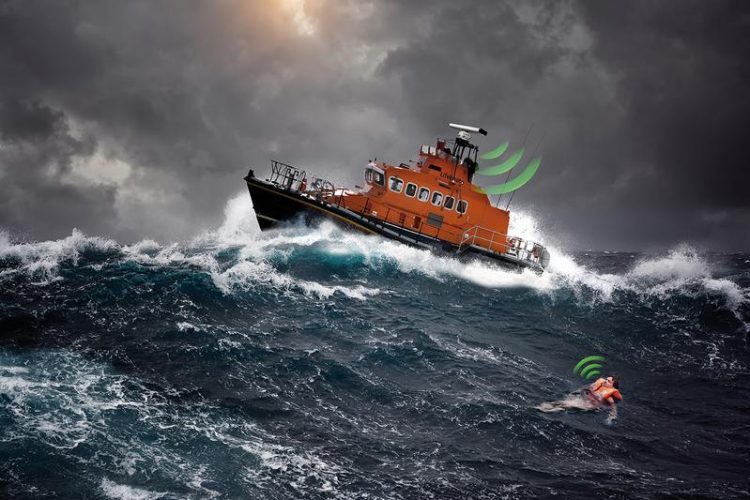New Maritime Radar Systems for Increased Safety on the High Seas

Next generation of maritime radars: The harmonic radar SEERAD is designed to detect tags in life jackets in the future to reliably locate shipwrecked persons Fraunhofer FHR
Especially the high costs of commercially available radio and position finding systems, amounting to more than 300 euros per person, have prevented these systems from gaining widespread acceptance. Instead of being carried by each crew member, individual devices that can be thrown after a man overboard are spread out across the ship.
This leads to one requirement: The accident must be noticed immediately. And even then, reaction times, long breaking and turnaround distances, and the different drifts of people and rescue devices can make it impossible to find the missing person. This difficulty increases on large container vessels with small crews, where missing persons are often only noticed when it is far too late, for example during shift changes or meals.
With the SEERAD project, which is funded by the German Federal Ministry of Education and Research (BMBF), Fraunhofer FHR, FH Aachen, and Raytheon Anschütz GmbH are developing a sea rescue system based on harmonic radar. With conventional maritime radars, it can be difficult or even impossible to detect small objects at sea in increasing swells because their reflections can barely be distinguished from the uneven surface of the water.
For this reason, the project partners are counting on transponders the size of a bank card (tags) which – integrated into life jackets, safety devices, or water sports equipment – return the signal of the maritime radar with twice its frequency. An extension of future maritime radars with a harmonic radar module that sends signals in the S-band and also receives them with twice the frequency in the C-band is capable of clearly registering these reflected signals to reliably locate a person who has fallen into the water.
The system’s range will reach up to one kilometer using passive reflectors only (without battery) and up to significantly more than ten kilometers using active transponders powered by a water-activated battery. These tags can be produced at prices of less than ten euros per piece. The tag’s compact size and its low price will allow for large-scale use, with each person on board being able to carry such a tag at all times. Thus, the radar system has the potential to become a widespread sea rescue system.
Fraunhofer FHR will exhibit SEERAD at the booth it shares with Fraunhofer Transport Alliance (hall B6, booth 319) at the SMM in Hamburg, Germany, from September 4 – 7, 2018. There, they will also present their work on a new maritime radar with an electronically controlled array antenna, which operates in the S band as well.
This radar system will be capable of accurately identifying and tracking a larger number of objects with smaller dimensions than the current mechanically rotating antennas, while also being significantly more robust. Besides the standard navigation tasks, the radar can also be used in fields such as the surveillance of port facilities, coastal areas, and river sections to make navigation safer.
As one of Europe’s leading research institutes in its field, the Fraunhofer Institute for High Frequency Physics and Radar Techniques FHR conducts extensive research in the area of high frequency and radar technology. Its core research focuses on sensors for precise distance regulation and positioning as well as imaging systems. The applications range from systems for reconnaissance, surveillance, and protection to real-time capable sensors for traffic and navigation as well as quality assurance and non-destructive testing.
Dr.-Ing. Thomas Bertuch | Teamleader Antennas and Frontend Technology | Phone +49 228 9435-560 | thomas.bertuch@fhr.fraunhofer.de
Dr.-Ing. Andreas Danklmayer | Speaker Business Unit Traffic | Phone +49 228 9435-582 | andreas.danklmayer@fhr.fraunhofer.de Fraunhofer Institute for High Frequency Physics and Radar Techniques FHR | Fraunhoferstraße 20 | 53343 Wachtberg, Germany | www.fhr.fraunhofer.de
https://www.fhr.fraunhofer.de/en/press-media/press-releases/SEERAD_SMM_2018_EN.h… Press Release and images in printable quality
Media Contact
All latest news from the category: Information Technology
Here you can find a summary of innovations in the fields of information and data processing and up-to-date developments on IT equipment and hardware.
This area covers topics such as IT services, IT architectures, IT management and telecommunications.
Newest articles

Compact LCOS Microdisplay with Fast CMOS Backplane
…for High-Speed Light Modulation. Researchers from the Fraunhofer Institute for Photonic Microsystems IPMS, in collaboration with HOLOEYE Photonics AG, have developed a compact LCOS microdisplay with high refresh rates that…

New perspectives for material detection
CRC MARIE enters third funding period: A major success for terahertz research: Scientists at the University of Duisburg-Essen and the Ruhr University Bochum have been researching mobile material detection since…

CD Laboratory at TU Graz Researches New Semiconductor Materials
Using energy- and resource-saving methods, a research team at the Institute of Inorganic Chemistry at TU Graz aims to produce high-quality doped silicon layers for the electronics and solar industries….



